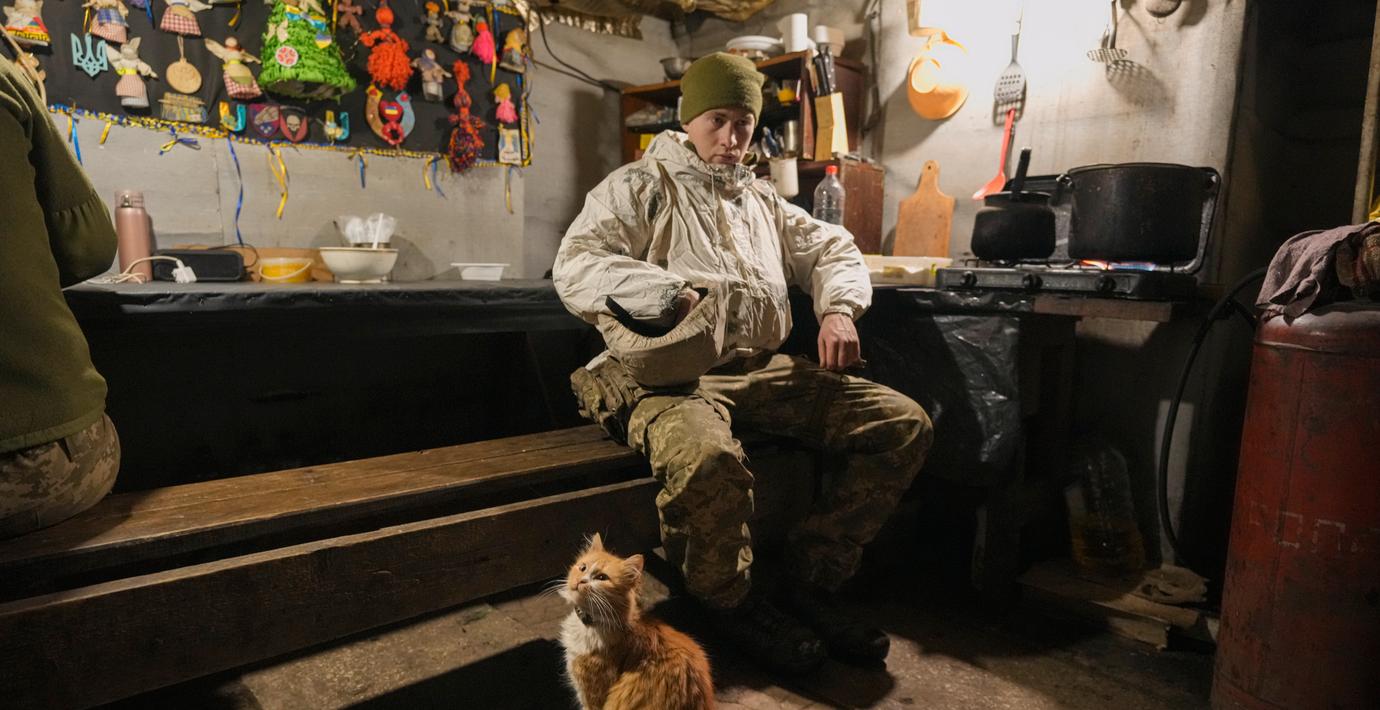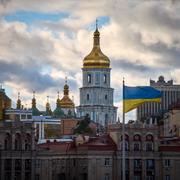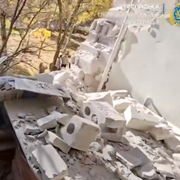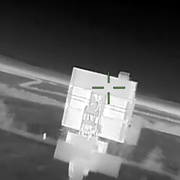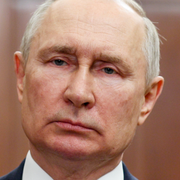Wikipedia (en)
The war in the Donbas, or the Donbas war, is an armed conflict in the Donbas region of Ukraine, part of the broader Russo-Ukrainian War. From the beginning of March 2014, in the aftermath of the 2014 Ukrainian revolution and the Euromaidan movement, protests by Russia-backed anti-government separatist groups took place in the Donetsk and Luhansk oblasts of Ukraine, collectively called the Donbas region. These demonstrations, which followed the February–March 2014 annexation of Crimea by the Russian Federation, and which were part of a wider group of concurrent protests across southern and eastern Ukraine, escalated into an armed conflict between the separatist forces of the self-declared Donetsk and Luhansk People's Republics (DPR and LPR respectively), and the Ukrainian government. While the initial protests were largely native expressions of discontent with the new Ukrainian government, Russia took advantage of them to launch a co-ordinated political and military campaign against Ukraine. Russian citizens led the separatist movement in Donetsk from April until August 2014, and were supported by volunteers and materiel from Russia. As the conflict escalated in May 2014, Russia employed a "hybrid approach", deploying a combination of disinformation tactics, irregular fighters, regular Russian troops, and conventional military support to destabilise the Donbas region.Ukraine launched a military counter-offensive against pro-Russian forces in April 2014, called the "Anti-Terrorist Operation" (ATO) from 2014 until 2018, when it was renamed the "Joint Forces Operation" (JFO).: 4 By late August 2014 this operation was able to vastly shrink the territory under the control of the pro-Russian forces, and came close to regaining control of the Russo-Ukrainian border. In response, Russia abandoned its hybrid approach, and began a conventional invasion of the Donbas. Between 22 and 25 August 2014, Russian artillery, personnel, and what Russia called a "humanitarian convoy" crossed the Ukraine-Russia border. Crossings occurred both in areas under the control of pro-Russian forces and in areas that were not under their control, such as the south-eastern part of Donetsk Oblast, near Novoazovsk. These events followed the reported shelling of Ukrainian positions from the Russian side of the border over the course of the preceding month. Head of the Security Service of Ukraine, Valentyn Nalyvaichenko characterised the events of 22 August as a "direct invasion by Russia of Ukraine", while other Western and Ukrainian officials described the events as a "stealth invasion" of Ukraine by Russia. Russia's official position on the presence of Russian forces in Donbas has been vague: while official bodies have denied presence of "regular armed forces" in Ukraine, it has on numerous occasions confirmed presence of "military specialists", along with other euphemisms, usually accompanied by an argument that Russia "was forced" to deploy them to "defend the Russian-speaking population".As a result of the invasion, DPR and LPR insurgents regained much of the territory they had lost during the Ukrainian government's preceding military offensive. Ukraine, Russia, the DPR and the LPR signed an agreement to establish a ceasefire, called the Minsk Protocol, on 5 September 2014. Violations of the ceasefire on both sides became common. Amidst the solidification of the line between insurgent and government-controlled territory during the ceasefire, warlords took control of swaths of land on the insurgent side, leading to further destabilisation. The ceasefire completely collapsed in January 2015, with renewed heavy fighting across the conflict zone, including at Donetsk International Airport and at Debaltseve. Involved parties agreed to a new ceasefire, called Minsk II, on 12 February 2015. Immediately following the signing of the agreement, separatist forces launched an offensive on Debaltseve and forced Ukrainian forces to withdraw from it. In the months after the fall of Debaltseve, minor skirmishes continued along the line of contact, but no territorial changes occurred. This state of stalemate led to the war being labelled a "frozen conflict"; despite this, the area remained a war zone, with dozens of soldiers and civilians killed each month. In 2017, on average one Ukrainian soldier died in combat every three days, with the number of Russian and separatist troops remaining in the region estimated at 6,000 and 40,000 respectively. By the end of 2017, the OSCE observatory mission had accounted for around 30,000 individuals in military-style dress crossing from Russia to Donbas at the two border checkpoints it was allowed to monitor. The OSCE has also documented numerous cases of military convoys crossing from the Russian Federation into the occupied territory on dirt roads away from official border crossings and usually at night.Since the start of the conflict there have been 29 ceasefires, each intended to remain in force indefinitely, but none of them have stopped the violence. The most successful attempt to halt the fighting was in 2016, when a ceasefire held for six consecutive weeks. Ukraine, Russia, the DPR, the LPR and the OSCE agreed to a roadmap for an end to the conflict on 1 October 2019. However, the conflict did not thaw since then and, by late summer 2020, still remained unresolved on multiple levels. The latest ceasefire (29th) came into force on 27 July 2020 which led to no Ukrainian combat losses for more than a month. According to Ukrainian authorities, from 27 July 2020 until 7 November 2020 Ukrainian mortal losses decreased tenfold (three Ukrainian soldiers were killed) and the number of attacks decreased 5.5-fold. The first trimester of 2021 saw a large increase in Ukrainian fatalities (25, compared with 50 deaths in the whole of 2020) and the buildup of a large Russian military force on the Donbas-Russian border late March to early April 2021 and from late October and November 2021 onwards.
